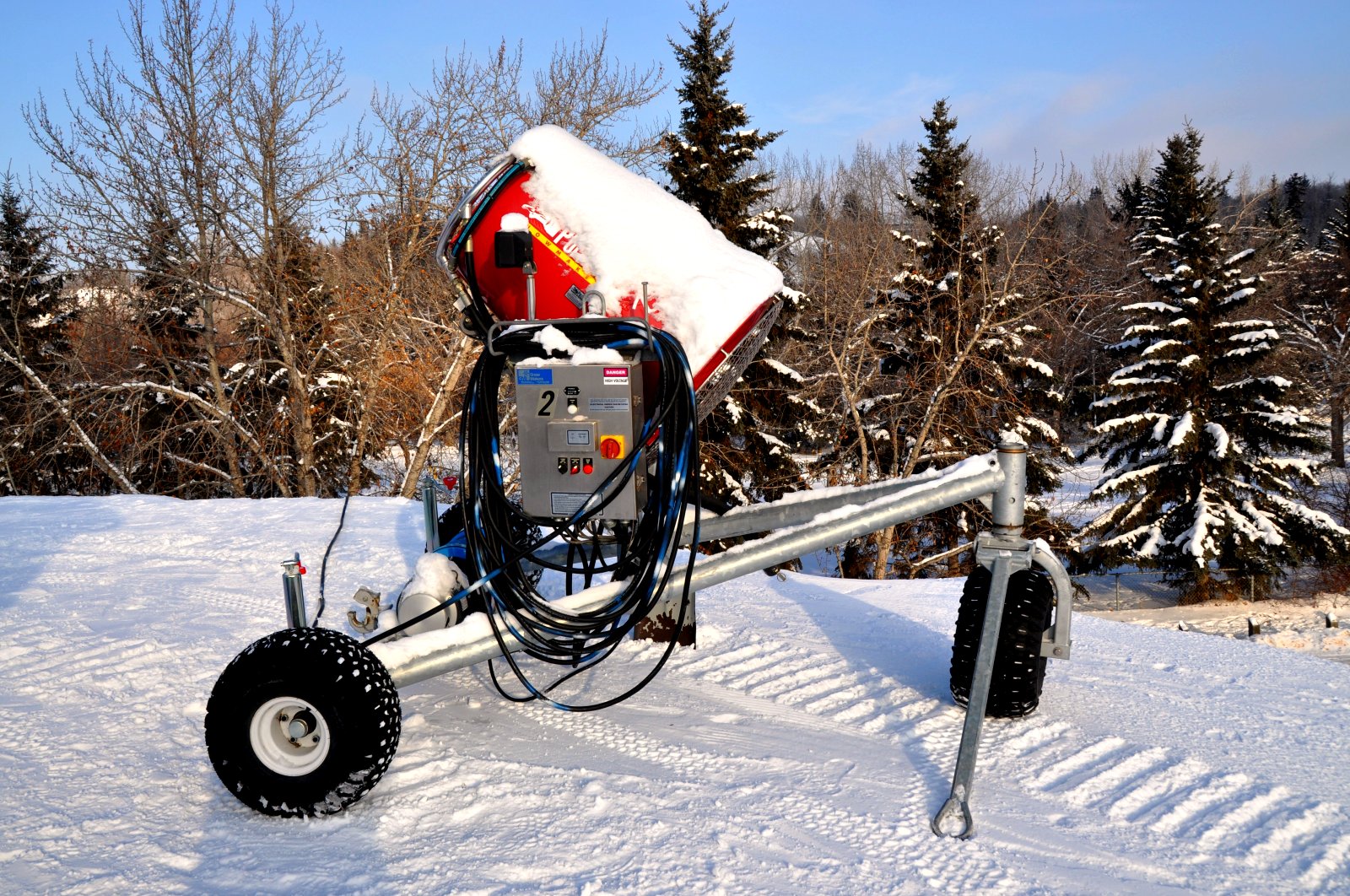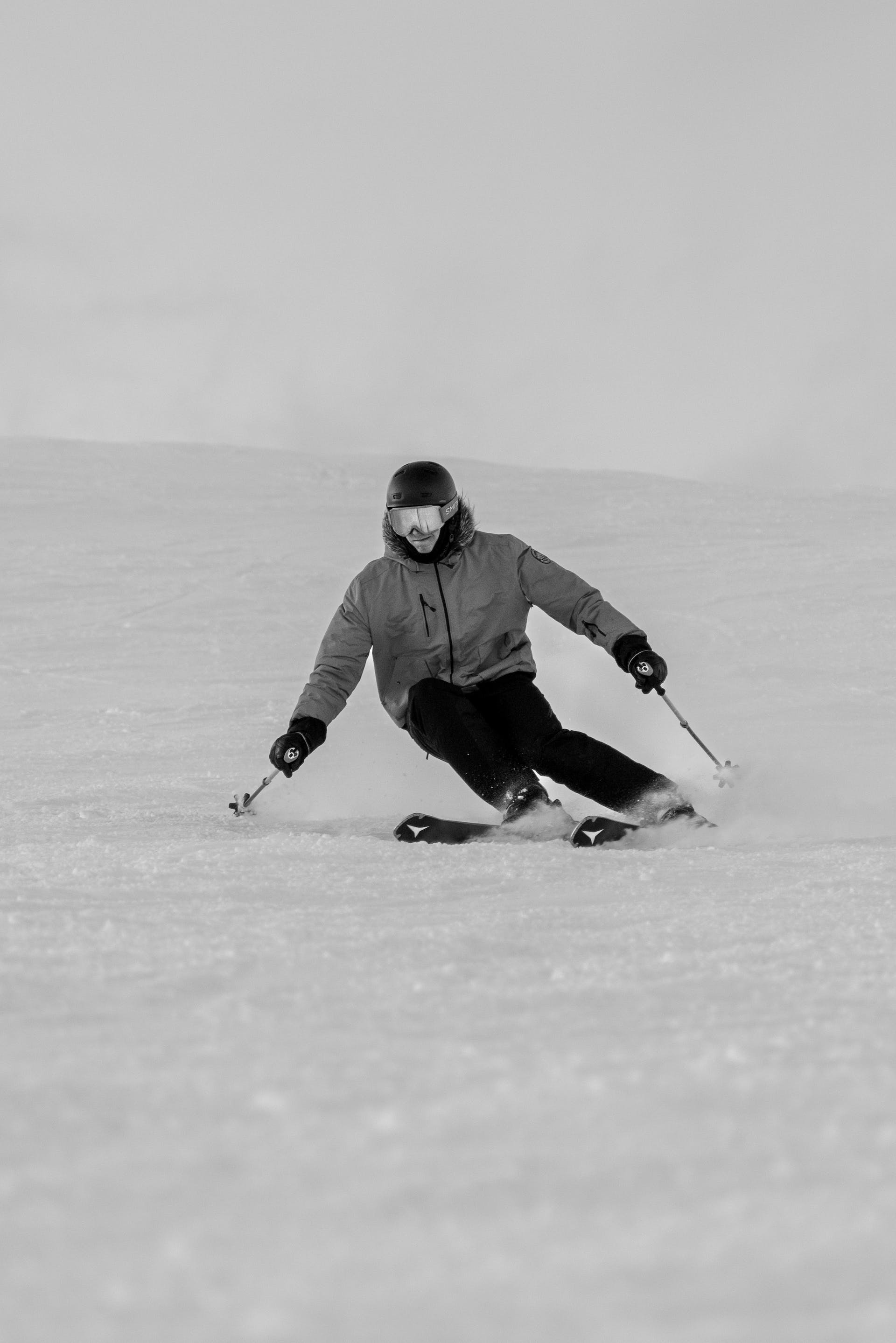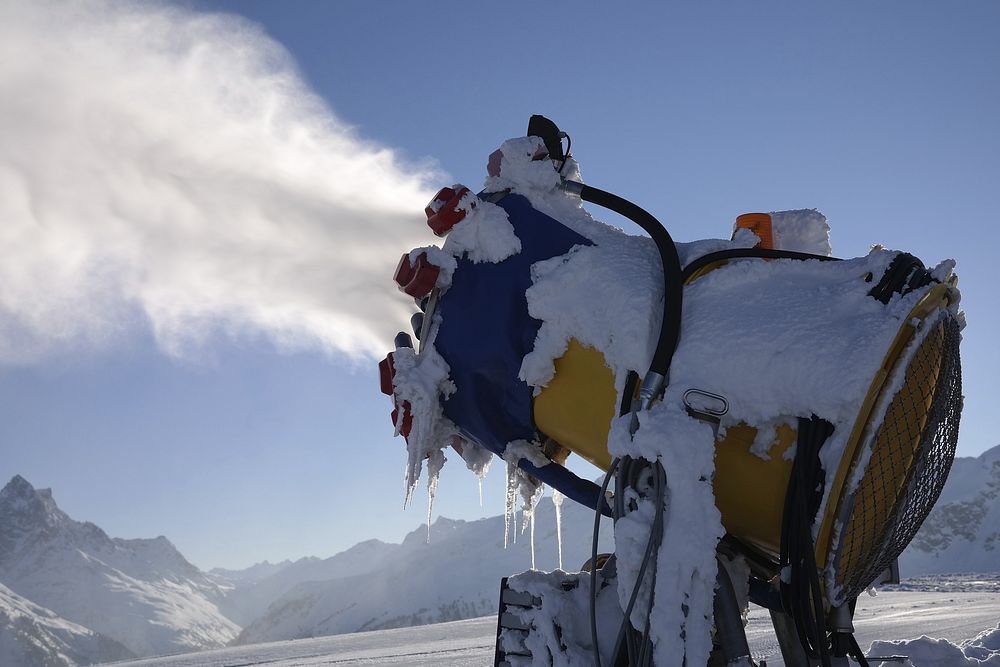You’ve probably heard the news that Mammoth Mountain is opening this Friday! But, there haven’t exactly been any big storms this month. So, will there be snow?
Yes, and that’s thanks to Mammoth Mountain’s ability to make snow artificially. In this article, we’ll pull back the curtain on the fascinating snow-making process!
What is artificial snow?
The first question many people ask is: How is artificial snow different from naturally-occurring snow? In order to answer that question, we have to take a look on a microscopic level.
Let’s start with good-old-fashioned snow, which needs three elements: water vapor, tiny particles of airborne material such as dust, and freezing temperatures. As this vapor comes into contact with these floating particles at just the right temperature, it forms six-sided crystals, or snowflakes. Sometimes, these crystal formations are fluffy and light, while others are dense and heavy. It all depends on the weather conditions.
Artificial snow also needs three things: liquid water, tiny particles of airborne material called snow seeds, and freezing temperatures. With the use of a snow machine, we’re able to mimic the process of natural snowflake formation by blowing the snow seeds through water nozzles and shooting them into the air. As long as the air conditions are just right, an ice crystal will fall to the ground, giving us artificial snow.

So, scientists have done an amazing job of copying the natural process of snowflake-making. And you might not even notice the difference. But, put a snowflake and an artificial ice crystal under a microscope and you’ll see that the man-made kind is more of a tiny ice ball than a delicate scaffolded flake.
Now the question is: does that difference matter?
Natural snow vs artificial snow
So now that we know what artificial snow is, should we be hanging up our snowboards at the idea of shredding on it?
Well, we’re not going to say that there’s no difference in riding on natural versus artificial snow. The slightly altered structure means that the latter can feel harder and slicker than powder. But for some people, the smooth ride of artificial snow is actually preferable. After all, it gives them unmatched speed! For others, especially beginners, artificial snow can feel tricky and unforgiving.

At the end of the day, most of us would prefer to ride on naturally-occuring snow. But, artificial snow is absolutely still worth it, especially when the alternative is a dry strip of dirt!
There’s another benefit of the unique structure of artificial snow: it’s durable! Many ski areas around the US lay a ground base of artificial snow before the first storm of the season. This gives the natural snow something to cling on to, making the slopes more consistent and enjoyable between storms.
What is the environmental impact of snowmaking?
Another common question is whether snowmaking is environmentally responsible. After all, it requires water and power to work.
Let’s start with water usage. According to a report from the Denver Gazette, a snow machine can use about 135,000 gallons per foot of snow. Yes, that is quite a lot of water! That said, Mammoth Mountain draws most of its water from reserves that are filled every spring and summer from snowmelt. In other words, recycled water from the previous winter. Luckily we’ve had a few great years of snowfall, giving us very healthy water reserves.
Now, how about energy? This is where environmentalists are a bit more concerned. Older fan gun snowmakers burn through about 3 to 4 kWh to 1 cubic meter of snow. That’s equivalent to running an air conditioning unit for about an hour. The good news, snowmakers are becoming more energy efficient all the time. There are now models that run off of as little as .7 kWh.
Finally, we should note that we’re very lucky here in Mammoth to have one of the deepest average naturally occuring snow packs in the country. In fact, thanks to our high elevation and unique atmosphere, we have an average of over 32 feet of naturally occuring snow per year. That means that the snow machines aren’t being used here nearly as frequently as in warmer, lower elevation ski areas.
What do you think about artificial snow?
As we’ve covered here, snow making machines have their pros and cons. In terms of drawbacks, they’re not as environmentally friendly as waiting for Mother Nature to bless us with a heavy snowstorm. And not everyone is a fan of the slightly different texture of man-made snow compared to powder.
But, there’s also a long list of benefits, including:
-
Laying a solid foundation for natural snow to last longer
-
Allowing the town of Mammoth to provide a consistently enjoyable experience for our guests from opening weekend to closing weekend
-
Preventing injury from dry patches during times of inconsistent storms
While we always have our fingers crossed for a season with lots of naturally-occuring snow, we’re also grateful to the technology that allows more people to enjoy Mammoth Mountain!

Speaking of opening day…
You’re going to need somewhere to stay! Mammoth Mountain Reservations offers condo rentals all over town so that you can cozy up by the fireplace after a long day on the mountain. Check out what we have available!
